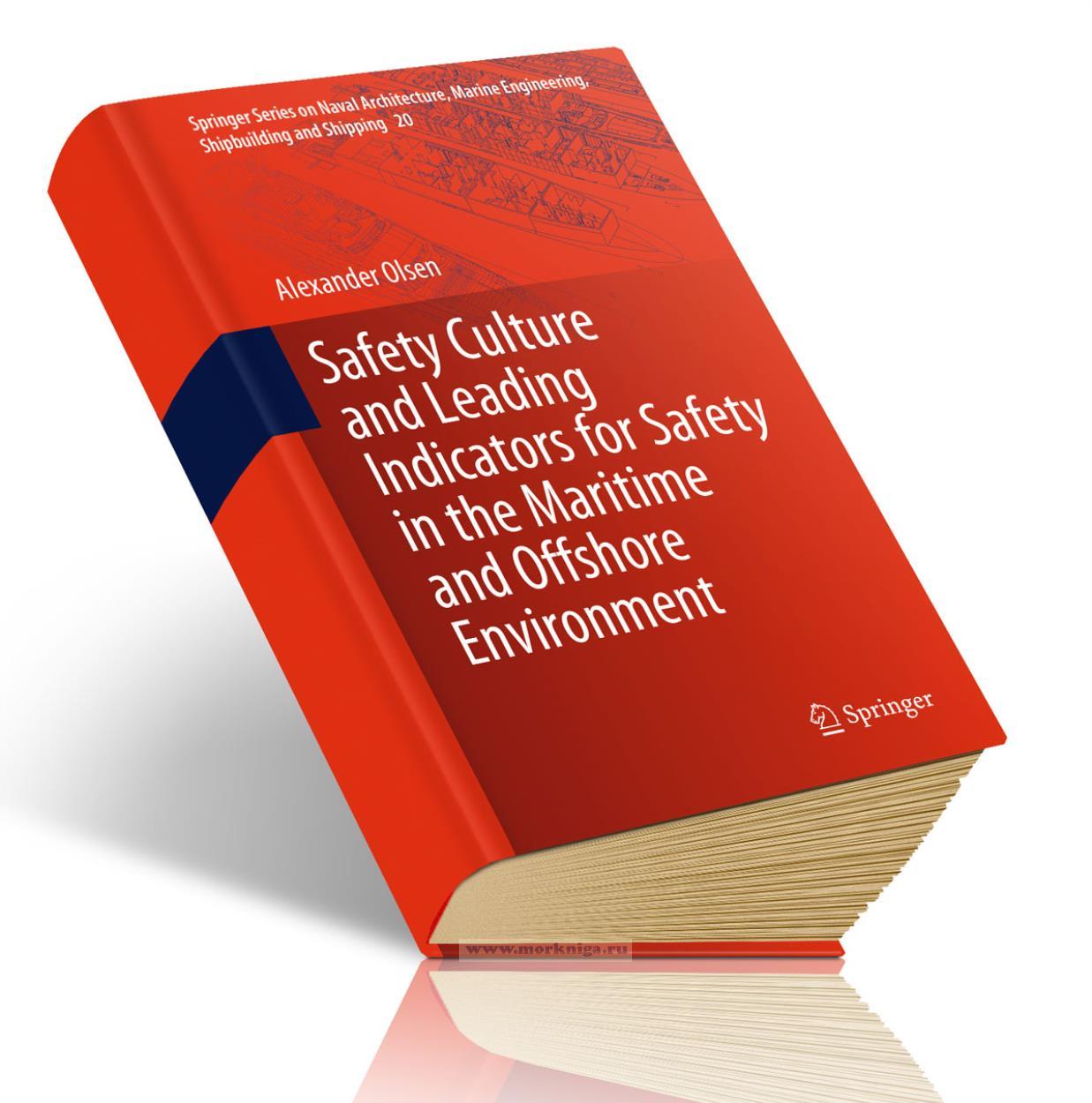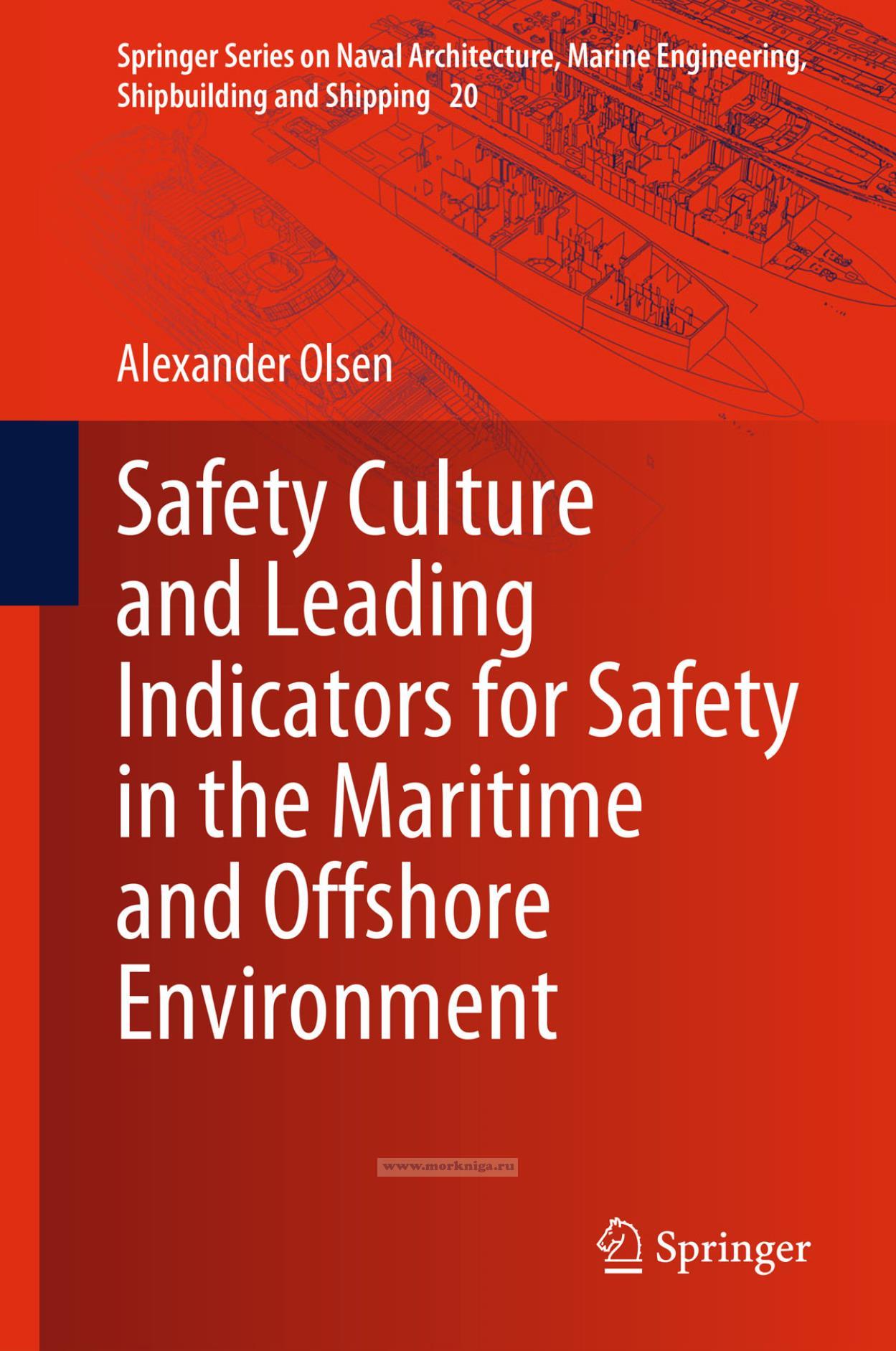Сб с 10 до 16
Safety Culture and Leading Indicators for Safety in the Maritime and Offshore Environment
Книга на английском языке
This book provides guidance and insight into the development process for safety indicators to comply with general classification rule requirements. The utilisation of this guidance will provide tangible benefits as the marine and offshore industry is able to realise the positive results of tangible safety indicators that are developed correctly and managed appropriately throughout the lifecycle of the vessel or platform.
In the marine and offshore industry, design and equipment configurations vary from one system to the next, and systems are in many cases increasingly complex. There are gaps in codes and standards which may lag technological innovations and there are issues related to interfaces between systems. Safety indictors such as risk analyses, FMEA, job safety analyses, management of change procedures, HSQE, technical manuals and reliability-based maintenance provide a formalised approach to identify hazardous situations, address the gaps and interconnection variances, and improve safety, environmental performance and operational downtime. The majority of Classification Societies (‘Class’) require their clients to develop and submit safety indicators as part of the classification requirements for certain systems and to obtain certain special notations.
Contents
1 Introduction
Part I Leading Safety Indicator for the Marine and Offshore Industries
2 Introducing Leading Indicators of Safety
3 Safety Culture
4 Leading Indicators of Safety
5 Interpreting the Results
Part II Failure Modes and Effects Analysis
6 Introducing the FMEA
7 Planning the FMEA
8 Developing the FMEA
9 FMEA Report and Class Review of FMEA
10 FMEA Verification Programme
11 FMEA Lifecycle Management
12 System-Specific FMEA Requirements
13 Sample FMEA/FMECA Worksheets
Part III Job Safety Analysis
14 Introduction
15 Job Safety Analysis Process
16 Getting the Most Out of Job Safety Analysis
17 Job Safety Analysis Programmeme Implemention
18 Job Safety Programmeme Monitoring
19 Hazard and Control Checklists
Part IV Marine HSQE Management
20 Introduction
21 Context, Leadership and Policy
22 Planning
23 Implementation and Operation
24 Performance Evaluation
25 Management Review and Improvement
26 Supplemental Requirements of the ISM Code
Part V Risk Assessment
27 Introduction
28 Risk Assessment Techniques
29 Conducting a Risk Assessment
30 Risk Management
31 Major Hazards in the Marine and Offshore Industries
Part VI. Technical Manuals and Publications
32 Introduction
33 Role of Instructional Materials
34 Writing Instructional Materials
35 Constrained Words and Constrained Language
36 Graphics in Instructional Materials
37 Verifying, Validating, Approving, Certifying, and Implementing Instructional Materials
38 Managing Instructional materials
39 Analysis Techniques
Part VII Cyber Security
40 Introducing Cyber Security on Ships
41 Cyber Security Characteristics of the Maritime Industry
42 Identification of Cyber Threats
43 Identification of Cyber Vulnerabilities
44 Assessing the Likelihood and Impact Assessment
45 Risk Assessment
46 Development of Protection and Detection Measures
47 Contingency Planning
48 Responding to and Recovering from a Cyber Attack
Part VIII Reliability Centred Maintenance
49 Introduction
50 Equipment Failure
51 Planned Maintenance
52 Condition Monitoring (Predictive) Maintenance
53 Failure Finding Maintenance
54 Consideration of Risks
55 Conducting and Documenting an RCM Analysis
56 Sustaining the RCM Programme
57 Overview of Condition-Monitoring Techniques
58 Example RCM Analysis of a Low-Speed Diesel Engine
Part IX Management of Change
59 Introduction
60 Recognition of Change
61 Management of Change
FMEA Glossary
References

